Herald Examiner Building
1914 – Julia Morgan
1111 South Broadway – map
Declared: 8/17/77
With the New York Inquirer - er, I mean Journal - and the San Francisco Examiner already under his belt, William Randolph Hearst founded the Los Angeles Examiner newspaper in 1903. Here’s a picture of the paper’s offices at 509 Broadway:
In 1913, Hearst commissioned Julia Morgan – who’d go on to create his San Simeon castle – to design new headquarters for the paper at Broadway and 11th. Working with Haenke and Dodd, Morgan came up with this 100,000 square-foot Mission Revival building featuring a hand-painted tiled lobby of gold and marble and a private apartment for the Chief upstairs.
The Examiner building under construction:
The black & white pictures are from the Los Angeles Public Library Photo Collection.
In 1922, eight years after the Examiner’s new office opened, WRH increased his journalistic empire by acquiring the Los Angeles Herald, first printed on October 3, 1873, by Charles Albert Storke in “a single-story brick block on Spring Street, nearly opposite the old Court House.” Then, in 1931, Hearst bought the Los Angeles Evening Express, founded in 1871 by five men calling themselves Tiffany and Co. (Tiffany was George A. Tiffany). Hearst put together the two papers as the Los Angeles Evening Herald-Express. This paper operated out of a building near Pico and Trenton Streets (torn down in the 1960s to help make room for the Convention Center). Confused? I sure am.
In 1962, the Hearst Corp. (the Chief died in 1951) merged the Examiner with its evening Herald-Express. The company then made the poor decision to focus on its afternoon circulation. Shortly after, the Los Angeles Times closed its afternoon paper, the Mirror, and began to corral the city’s morning trade. In addition, advertisers were beginning to shy away from the afternoon Herald Examiner due to its higher percentage of blue-collar readers. Plus, evening newscasts were grabbing more and more of the public’s attention, rendering afternoon rags more and more obsolete. Oh. And there was that decade-long Newspaper Guild strike which hit the Herald Examiner in 1967, too. That had to hurt. Daily circulation that year was at its peak at 729,000. It was then the country’s largest afternoon daily newspaper, but it was all downhill from here.
In July 1989, the Hearst Corporation announced it was putting Her-Ex up for sale (although the paper had been looking for a buyer for a while with no luck). By this time, the paper was ranked just the 42nd largest in the nation, with a daily circulation of 238,392 daily and a Sunday run of 183,122 (comparatively, the L.A. Times had a circulation of 1,118,649, nearly five-fold the amount). Despite a last-ditch effort for a management-led buyout of the paper and some interest from Marvin Davis and the Toronto Sun, Herald Newspapers vice president Robert J. Danzig announced on November 1 the paper was shutting down. The Herald Examiner published its last edition the very next day. That final paper, with the headline “SO LONG, L.A.!”, was the Herald Examiner’s fourth-largest seller ever, moving nearly 400,000 copies. Maybe they should’ve published their final paper every day.
The site of the 1949 Press Building.
What’s up with the building now? You got me. Developers Urban Partners were chosen in 2002 to convert the landmark into offices. Three years later, they were turning the old Herald Examiner building into a 600-unit residential and retail complex. As of last November, the Hearst Corporation had dumped Urban Partners, but on board the $350 million project was restoration-architect Brenda Levin (let’s hope the plans call for the replacement of the building’s big arched windows, filled in for more than sixty years). Also contributing to the project is Thom Mayne, whose two proposed towers required the demolition last year of the 1949 William J. Heiser-designed press building just to the west of the landmark.
Finally, for some recent indoor shots, see chuck 91214’s Flickr set here.
Sources:
Rosenstiel, Thomas B. “Fighting for Life” The Los Angeles Times; May 22, 1989
“Los Angeles Herald Examiner Is Up for Sale” The New York Times; Jul 30, 1989
“Herald Examiner To Shut Down” The Los Angeles Times; Nov 1, 1989
Rasmussen, Cecilia “118 Years of Publishing” The Los Angeles Times; Nov 2, 1989
Rasmussen, Cecilia “Convention Center Site, Unconventional Newspaper” The Los Angeles Times; Nov 28, 2004
Spalding, William Andrew Autobiography of a Los Angeles Newspaperman 1874 – 1900 Huntington Library 1961 San Marino, CA
Up next: (Site of) 919 West 20th Street Residence
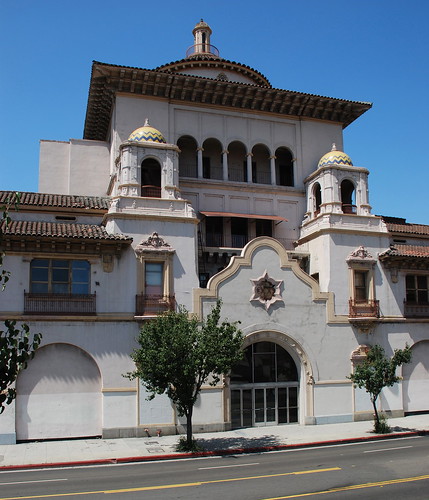
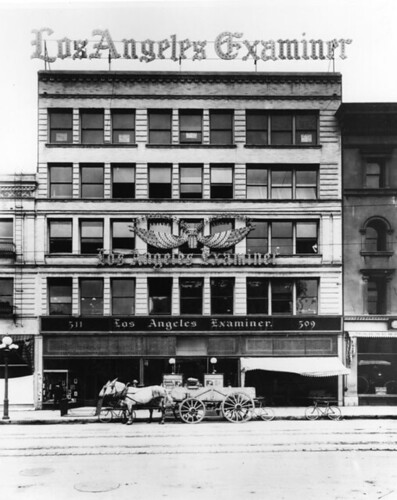
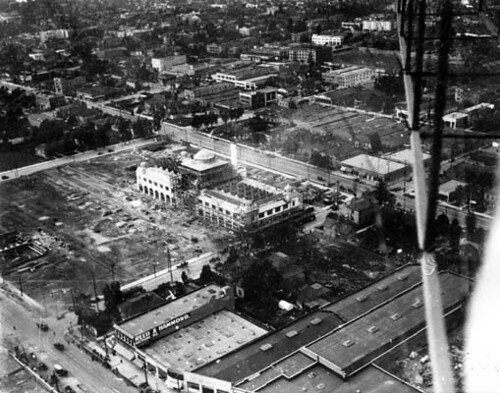
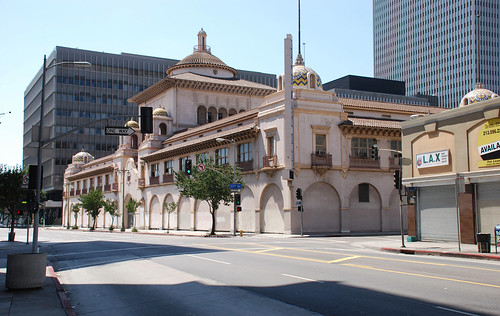
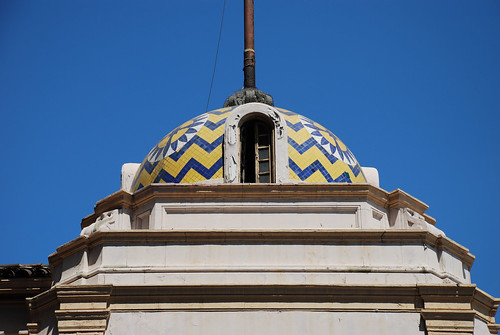
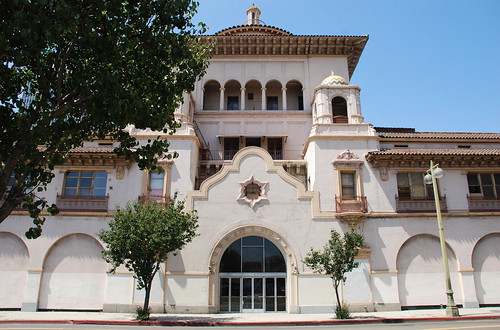
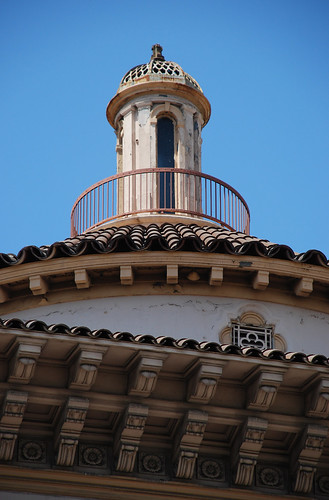
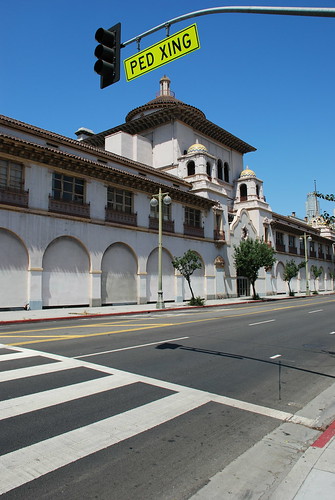
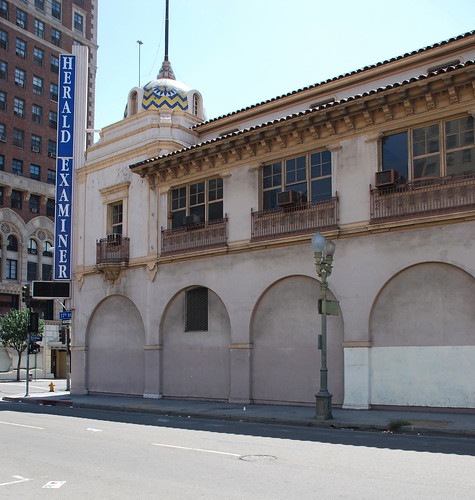

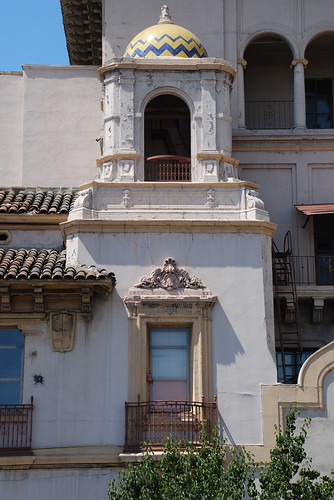
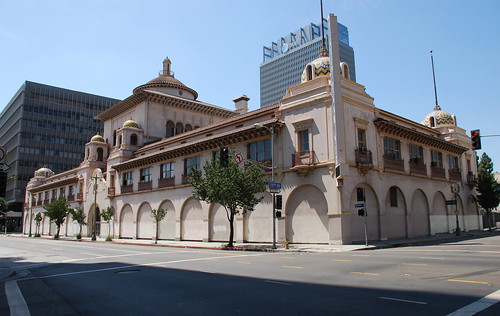

2 comments:
I'm a newspaperman (copy editor), and I recall passing by the Herald Examiner building during my first visit to Los Angeles in June 1989. I knew the paper was in trouble, and I'm sorry it went the way of the Washington Star, Philadelphia Bulletin and Syracuse Herald-Journal.
I hope someone finally puts that building to good use. Any building designed by Julia Morgan deserves a better fate than this.
My grandfather, father, and I worked at the Examiner Building from the day it opened until 1967. Then, in '67 there was the lock-out/strike. Hearst imported scabs and housed them in an underground "paper-roll" warehouse on Hill St.. The pressmen showed up for work day, only to find locks on everything. Rocks were thrown and windows broken. So, the windows were cemented in.
We often hear that Pres. Reagan led the movement to defeat unions when he fired air traffic control employees. But, I really think the Examiner strike in '67 was the beginning of the demise of unions.
Post a Comment